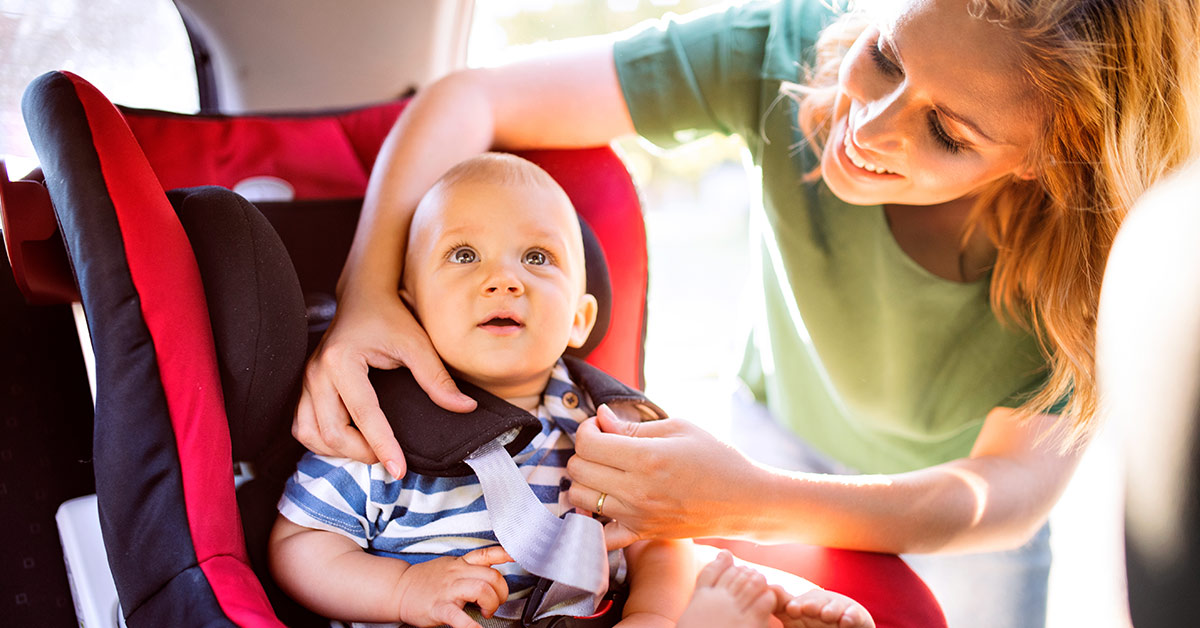This mom’s “nagging wife” text about the position of the chest clip on her son’s car seat ended up saving his life just 15 minutes later. She’s telling her story to help educate other parents on car seat safety. (1)
Properly Set Up Car Seat Saves Baby’s Life
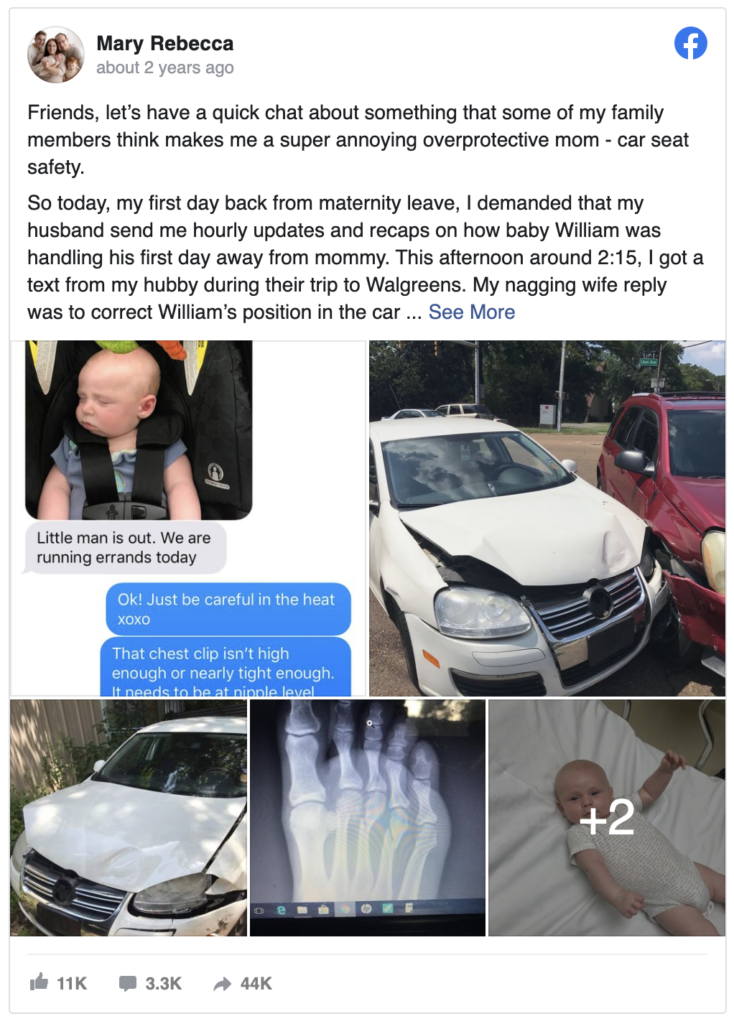
Three months after giving birth to her son William, Rebecca Tafaro Boyer’s maternity leave was over and it was time for her to return to work. A first-time mom, she was naturally quite nervous about her baby’s first day without his mother. (1) She requested that her husband send her hourly updates about how baby William was doing. At 2:15, her husband sent her a photo of their son asleep in his car seat while they were out running errands. (1)
The Story Continues…
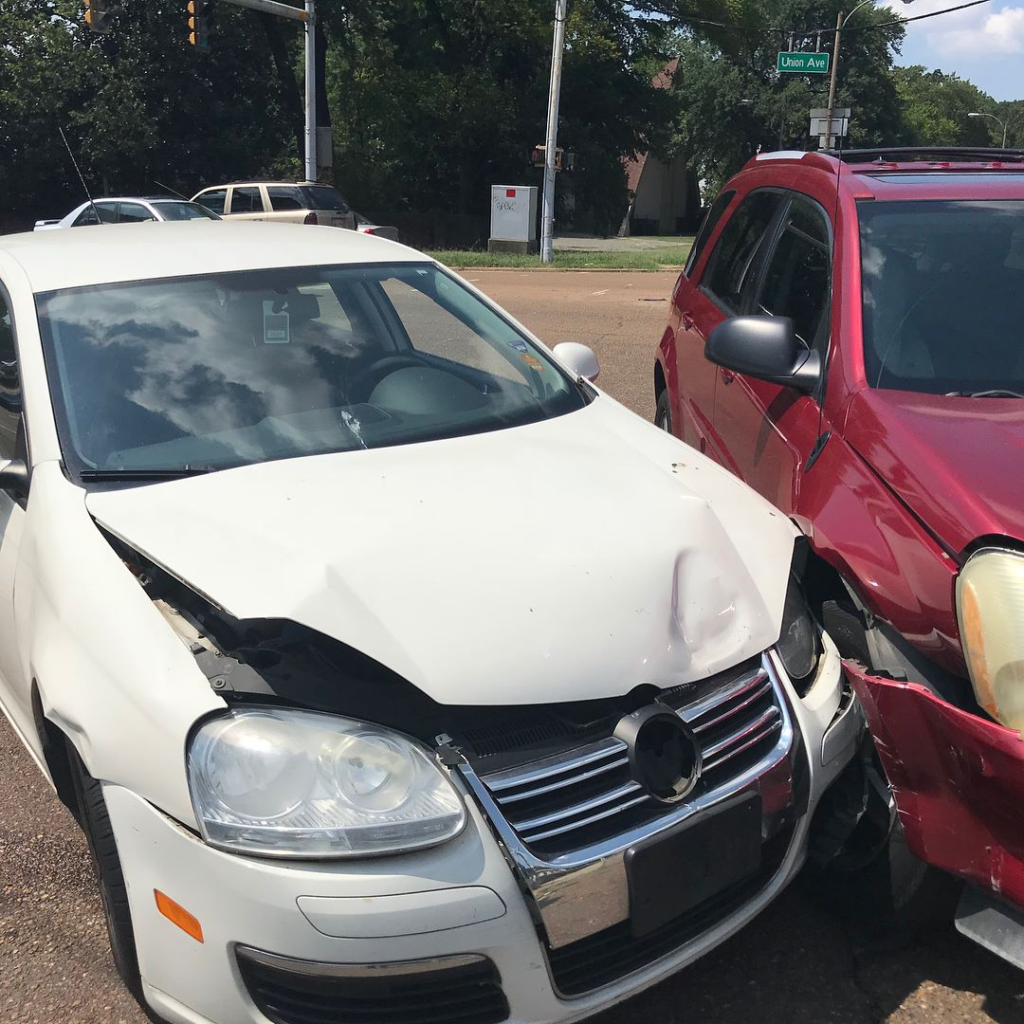
In what she called her “nagging wife reply”, she told her husband that he needed to make a few corrections to how he strapped William into the car seat. He needed to tighten the straps and raise the chest clip, which was too low (It should be at nipple level or just below the arm pit). (1)
Fifteen minutes later, her husband called her in a panic – they had been in an accident. Unfortunately for him, his foot was broken in three places, and had three dislocated toes. Little William? He was so well-secured that he hardly felt the jolt and slept through the entire thing. (1)
Luckily everyone was okay
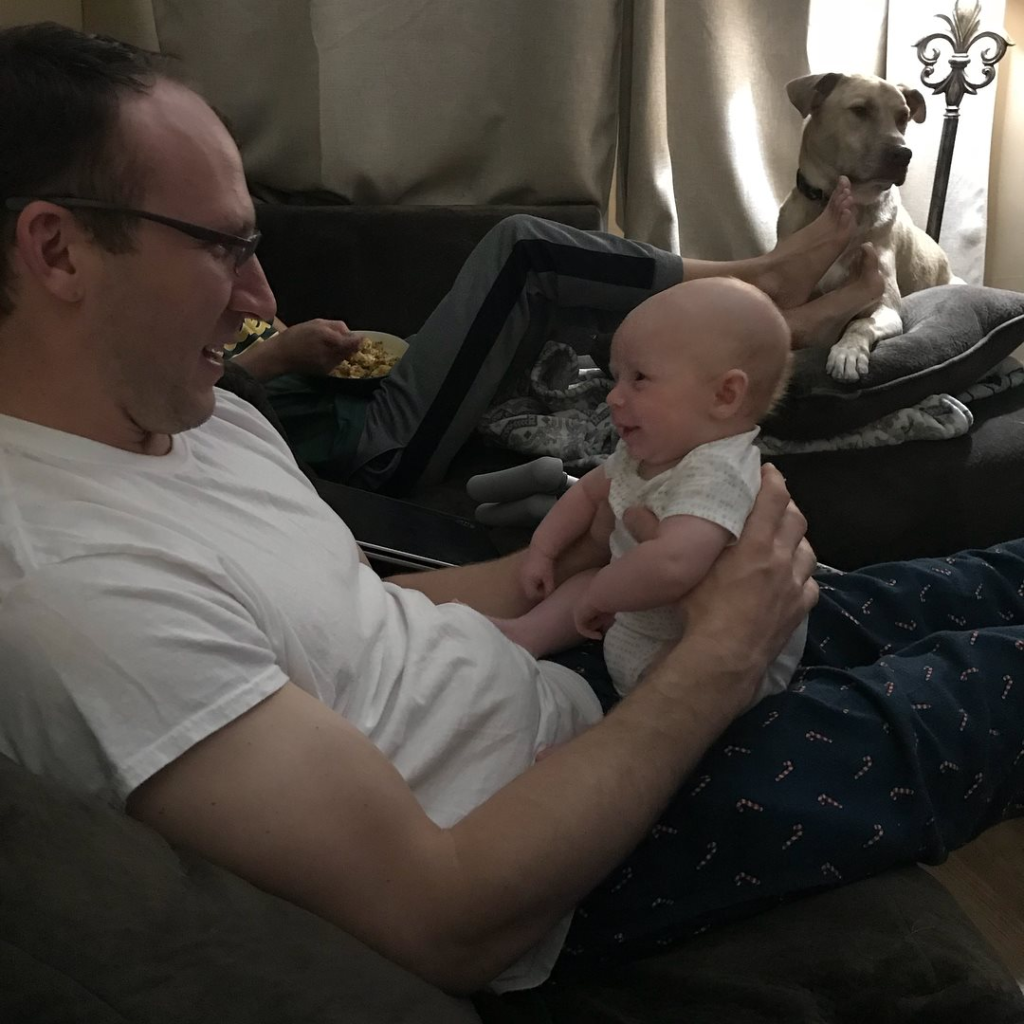
“The boys were less than three miles from our house when a woman pulled into oncoming traffic to try and make a quick left turn. David just didn’t have enough time to stop – it could have happened to anyone,” she wrote in her Facebook post. “He slammed on the brakes at nearly 50 miles an hour before colliding with the front passenger side door of her SUV. My precious little bundle of joy was so well restrained in his car seat, THAT HE DIDN’T EVEN WAKE UP. Even with the impact of the two cars, William only received a minor jolt – so insignificant that he was able to continue on with his nap” (1)
She and her husband are both incredibly grateful to the nurses who made sure William was, in fact, fine. Even more so, they are singing the praises of their Britax car seat. (1)
Child Car Seat Safety
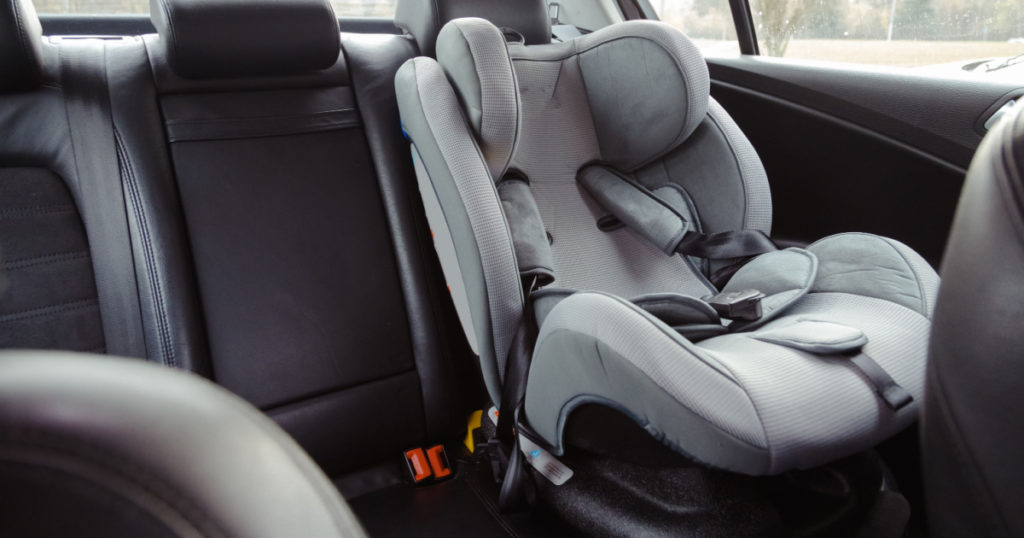
Tafaro-Boyer spent the rest of her post educating others in car seat safety and the importance of following the manufacturer’s directions to a T. Her biggest reminder is that now that the car seat has been in an accident, they will be replacing it with a new one immediately. (1)
“And do y’all know what happens now to the beautiful three month old car seat that protected my little monkey man?” she wrote. “It goes STRAIGHT 👏 IN 👏 THE 👏 TRASH 👏 according to the NHTSA (National Highway Traffic Safety Administration) my expensive, barely broken in car seat is now garbage. Any car seat that has been involved in a moderate to severe motor vehicle incident where the car cannot be driven away from the scene of the crash immediately becomes defective.” (1)
Types of Car Seats
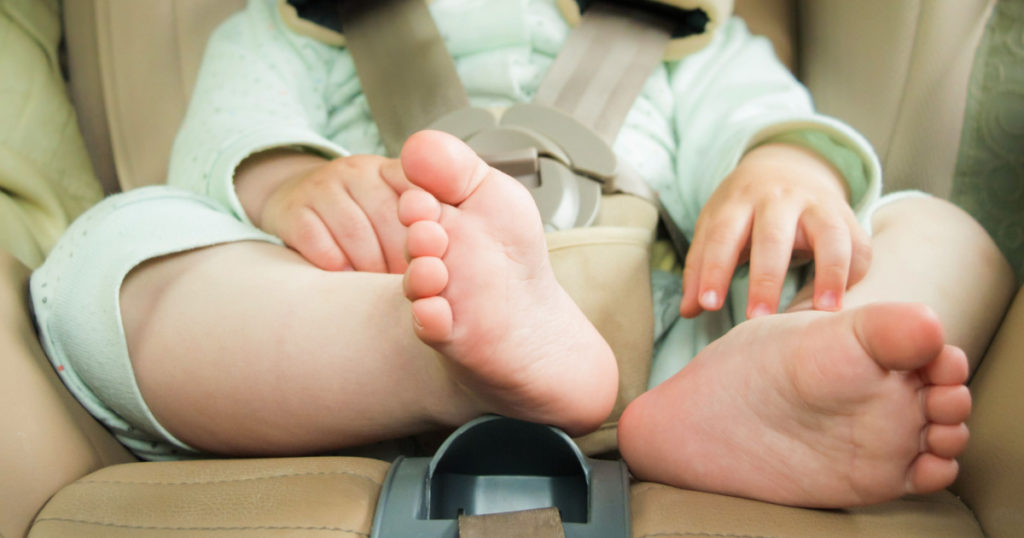
Little William was in a rear-facing car seat because he is only three months old. As your child grows, however, they will eventually have different needs. Depending on what age group your child falls in will determine what kind of car seat they should be in. (2)
1. Infants and Toddlers
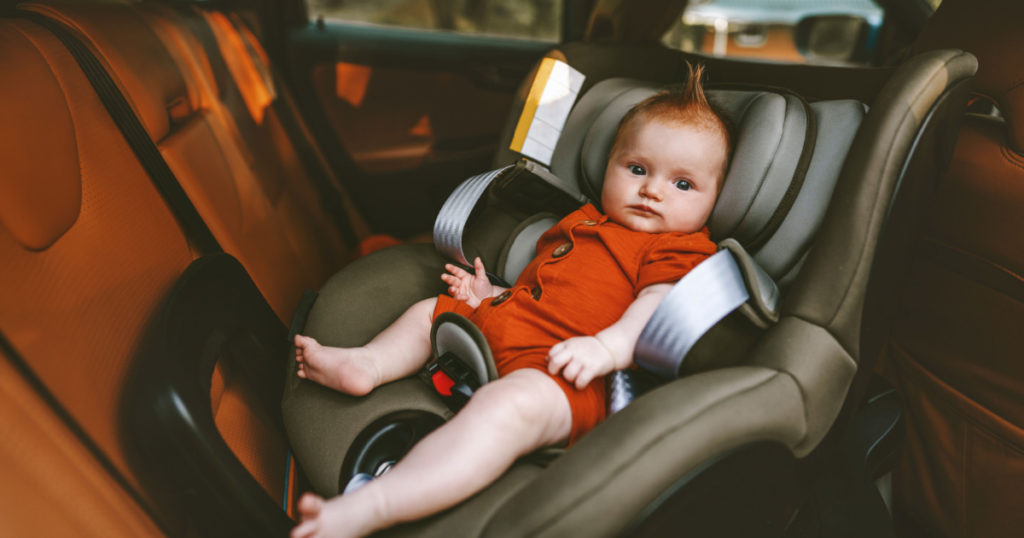
Infants and toddlers should be in rear-facing car seats until they reach the highest weight or height allowed by the car seat manufacturer. The information, along with a diagram of how to set up the seat and strap the child in, can be found in the manual and usually on the side of the seat. (2)
Most convertible car seats will accommodate children for two or more years. (2)
2. Toddlers and Preschoolers
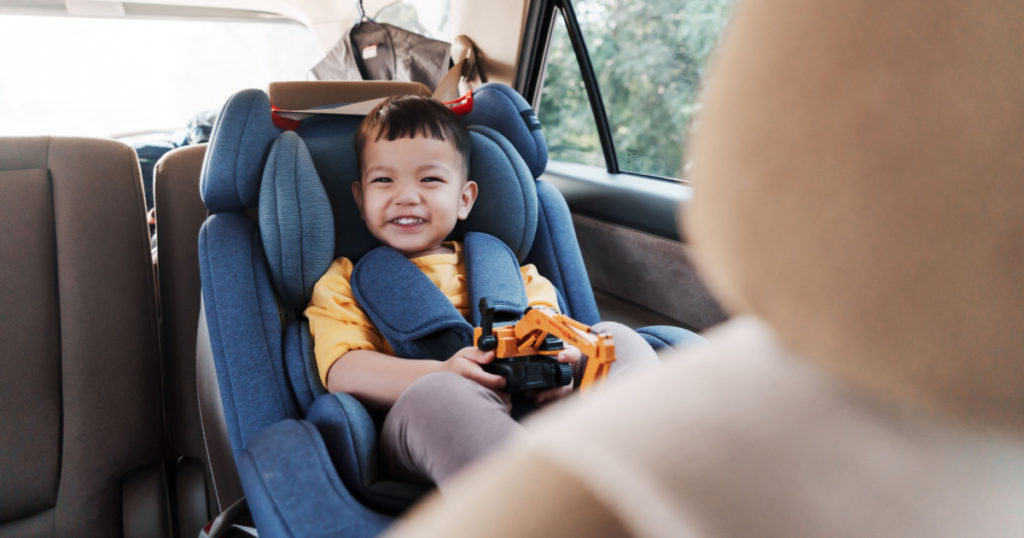
Once a child has outgrown their rear-facing seat, they will require a front-facing car seat with a harness. They should use this seat as long as possible until they reach the maximum height and/or weight requirements set by the seat’s manufacturer. (2)
Most front-facing car seats can accommodate children who weigh 65 pounds or more. (2)
3. School-Age Children
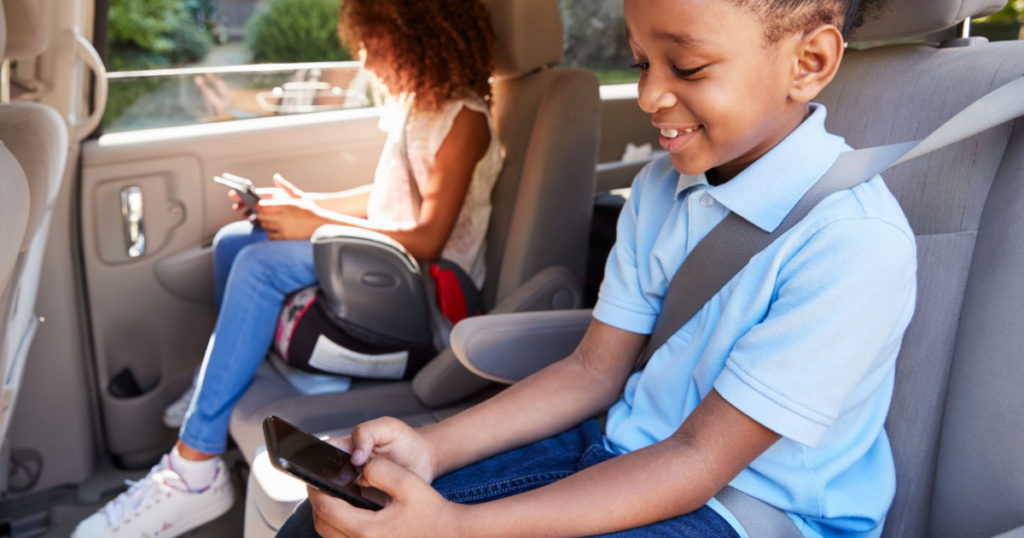
When a child is too big for a car seat, they will then graduate to a booster seat. The purpose of a booster is to ensure that the car’s seat belt is in the correct position. They should continue to use this until the belt fits properly without it, which usually requires them to be four feet and nine inches tall. (2) All children under the age of 13 should ride in the backseat of the car always. (2)
4. Older Children
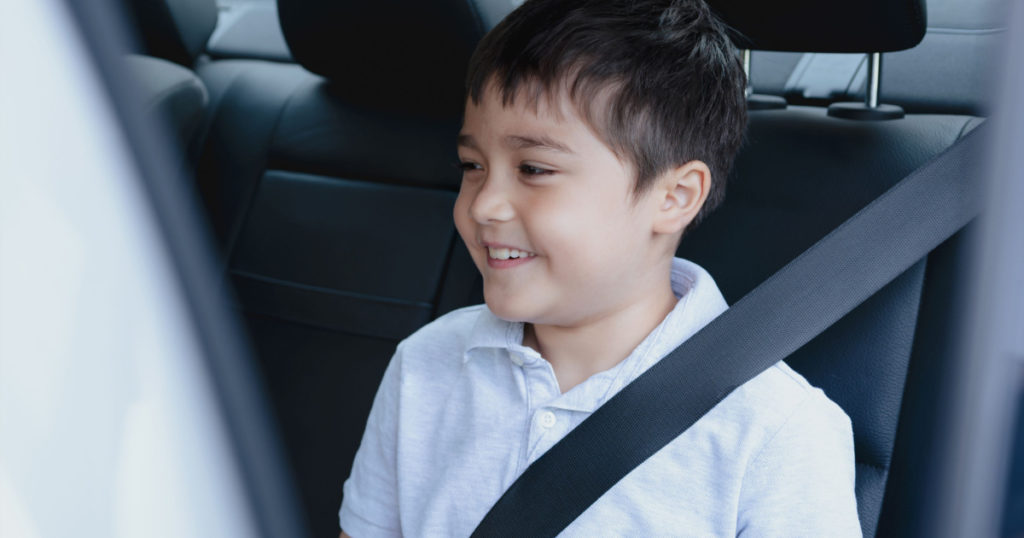
Once a child is big enough that the seat belt fits properly without a booster seat, they can sit in a regular seat. Of course, just like adults, they should always use a properly secured lap and shoulder seat belt. (2)
Again, children under the age of 13 no matter how tall they are should ride in the back seat. (2)
Car Seat Installation
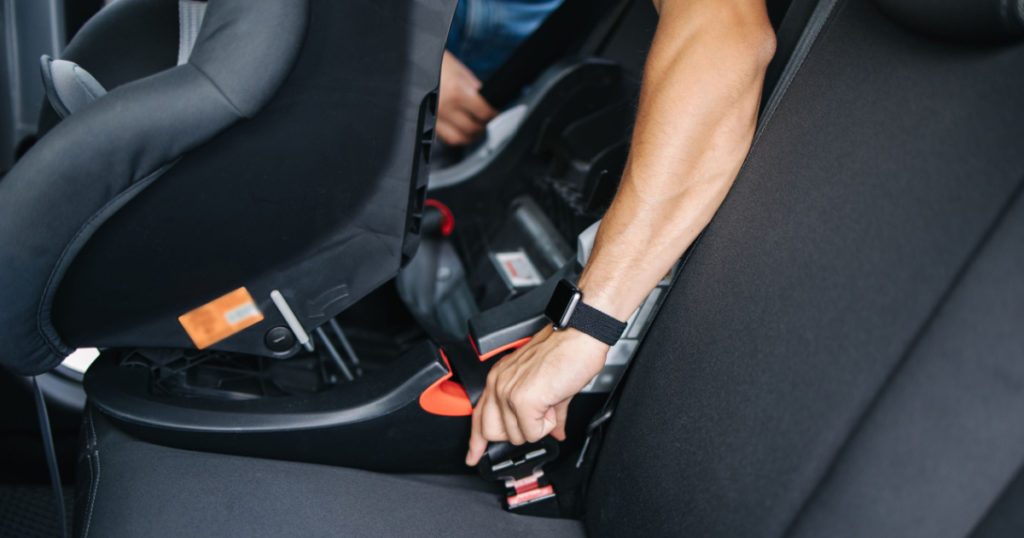
As Tafaro-Boyer proved in her family’s scary accident experience, proper car seat use is imperative every single time. Each car seat will be different – some will have their own LATCH (lower anchors and tethers for children) system, while others will use your car’s seat belts to secure the seat in place. (2)
Make sure you take the time beforehand to practice installing your seat when you’re not in a rush, and as Tafaro-Boyer showed us, making sure each element is in the correct position could potentially save your child’s life. If you are unsure, you can visit one of the many child car seat inspection stations across the country to have your work double-checked by a professional. (3)
Common Mistakes Parents Make When Using Car Seats
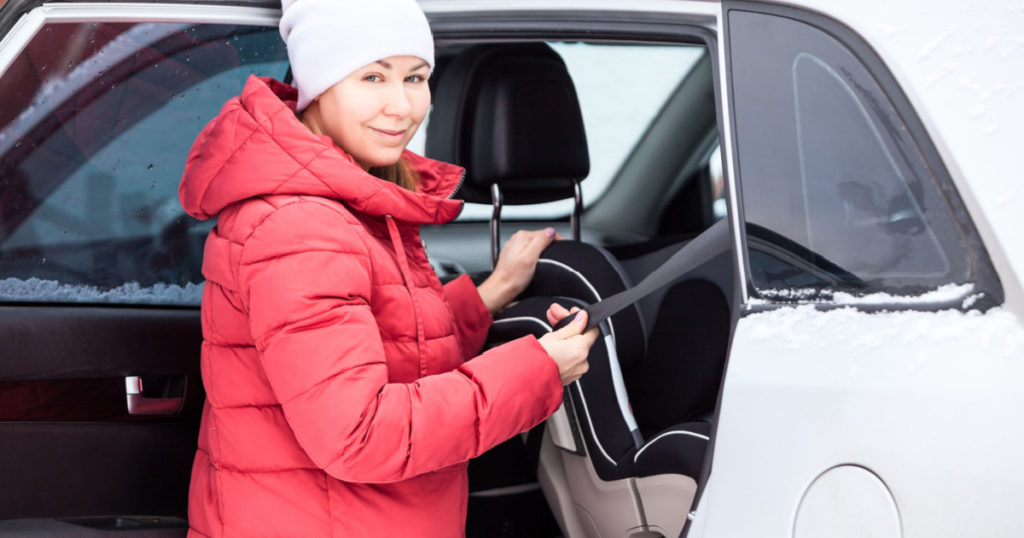
Being a parent is tough and there is a lot for you to learn and figure out. Here are some of the most common car seat mistakes for you to avoid:
1. Buying Used Without Doing Your Research
Car seats can be expensive and sometimes we don’t all have the money to purchase one. If considering used, make sure the seat comes with (4):
- An instruction manual with the manufacture date and model number
- Is not expired or more than six years old
- Has not been recalled
- It is not damaged and has never been in an accident
Generally, it is not advised to purchase a used car seat. If you are struggling financially, check to see if you qualify for a free one through your local health department. (1)
2. Putting The Seat In The Wrong Spot
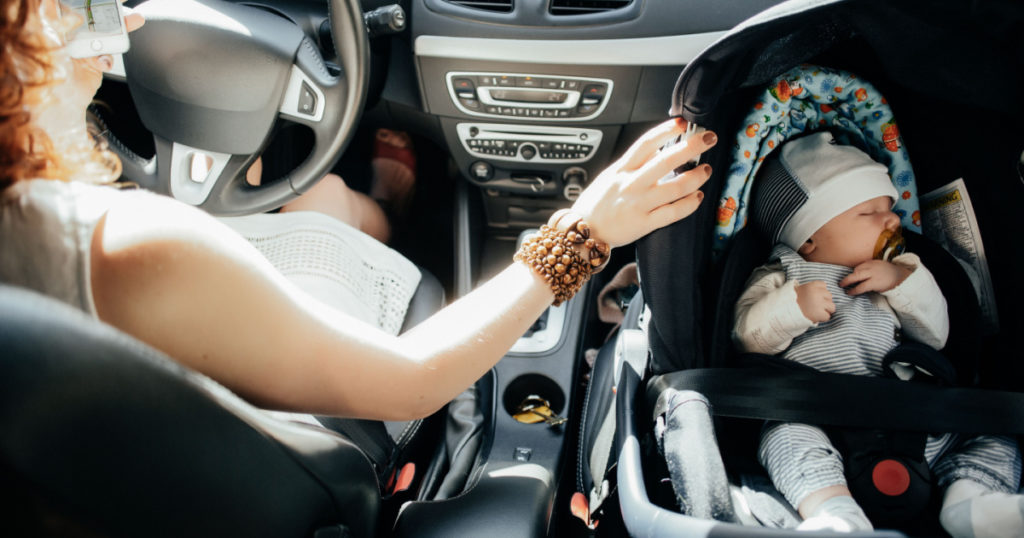
Car seats should always be in the back seat away from the airbags. If the seat is for an infant or toddler, then it should be rear-facing. Don’t put a baby in a car that does not have a back seat unless the airbags can be turned off. (4)
3. Incorrect Installation and Buckling
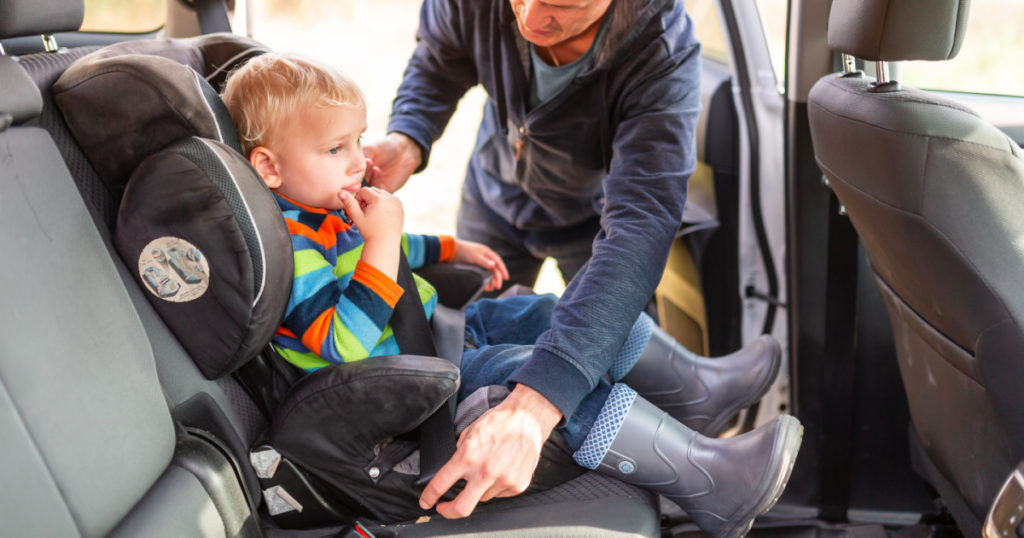
As previously mentioned, make sure that you follow the manufacturer’s instructions for the positioning and installation of the car seat, as well as how you buckle your baby into the seat. Proper installation includes correctly angling the incline of the seat. (4)
The car seat’s job is to protect your baby no matter what happens, even if your child is ejected from the car. Proper buckling and installation can save your child’s life. (4)
4. Moving Your Child Too Soon
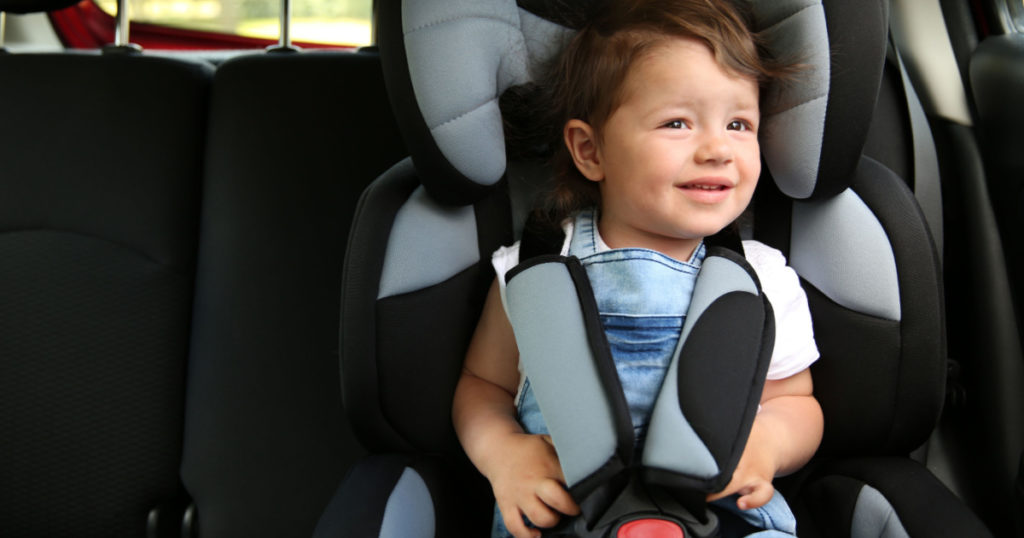
The American Academy of Pediatrics recommends you use rear-facing child seats as long as possible, so resist the urge to move them up before they max-out the height or weight requirements of the seat. (4)
Once your child has graduated to a front-facing car seat, keep them in that also until they have maxed-out the size restrictions. The same goes for moving a child from a booster to just a seat belt. Wait until they are the correct height and weight, they will be safer because of it. (4)
5. Using Pads and Not Removing The Child’s Outerwear
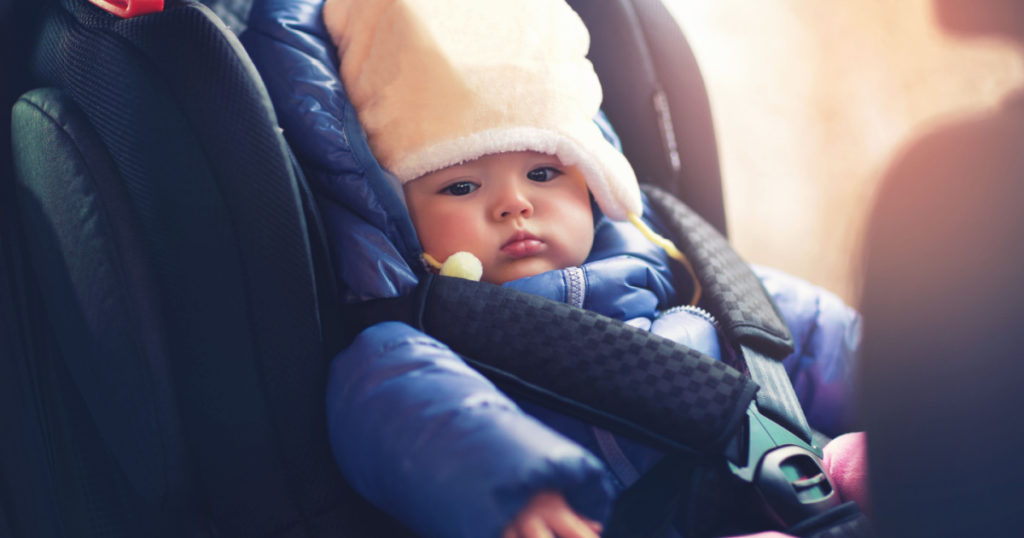
Cloth padding to “soften” the seat belts and not removing slippery cool and cold-weather outerwear puts your child in danger. These items make it much easier for them to slip out of the car seat in the event of a bad accident. (4)
6. Using a Booster Seat Incorrectly
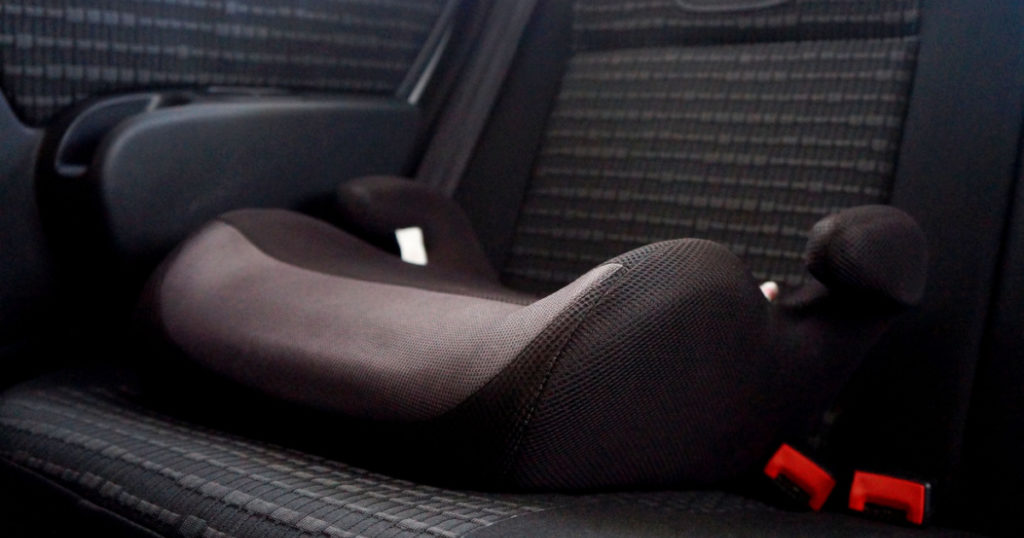
Booster seats are there to help seat belts fit correctly. Any child using a booster should use a shoulder and lap belt – never just a lap belt. (4)
Seat belts save lives – and so do car seats. Do your research and make sure your child is secure at every age. As the Boyer family can attest to, you will be glad you did it.
Keep Reading: Challenge: How to De-Clutter Your Home in 30 Days
Sources:
- “Mary Rebecca.” Facebook
- “Car Seats: Information for Families.” Healthy Children.
- “Car Seat Safety.” Kids Health.
- “Infant and toddler health.” Mayo Clinic.
